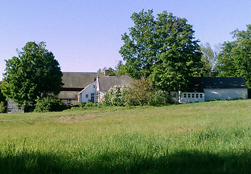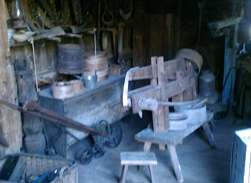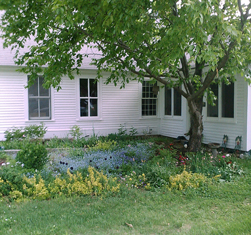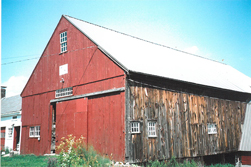

Oak Hill Farm (1781) This colonial-era farm was owned by the same family from 1771-2014. Other early buildings on the farm included a circa 1787 English-style barn, a cobbler’s shop, an ice-storage building (later converted to a maple-sugar house), a blacksmith shop, a cider mill, and later a steam-powered saw mill. The sap house and blacksmith shop still stand, but only the foundation of the cider mill remains. The brick saw-mill foundation has been covered over. Portions of the cobbler’s shop are thought to have been incorporated into the ell. The front part of the large post-and-beam barn was moved from the Francis Blood farm (now Ruth Quinn’s) prior to 1876, and placed on a foundation made of granite cut on the property. The rear portion, added in 1892, was constructed partly from salvaged materials of the original early barn, and partly from wood from trees harvested in the forest and cut into lumber at the farm’s sawmill. A unique feature of this barn is an interior square silo. There are several levels of hay lofts with connecting catwalks, and the topmost window is held together with wooden pegs. Wooden platforms and troughs for the cows still exist along with windowed stalls for work horses, as does an interior elevated walkway (now boarded in) meant for the cows to come back into the barn from the fields. Much later, in 1966, a new dairy wing was added to the old barn by extending out from the barn cellar, again built with lumber harvested from the farm. Oak Hill Farm has received awards. In 1976 the New Hampshire State American Revolution Bicentennial Commission honored the farm by presenting a Certificate of Recognition marking the ownership of the farm retained in the same family for at least 200 years. Twelve years later the United States Secretary of Agriculture designated the Colburn-Weston farm as one of our national bicentennial farms. Now the farm is experiencing a new beginning. In 2014 it was sold to new owners pledged to respect the property’s history and revitalize it back to its agricultural roots. Elias Colburn’s homestead stands as a testament to all the qualities and fortitude that sustained one family for over 240 years, with hopes for a bright future ahead.
|
||
 |





